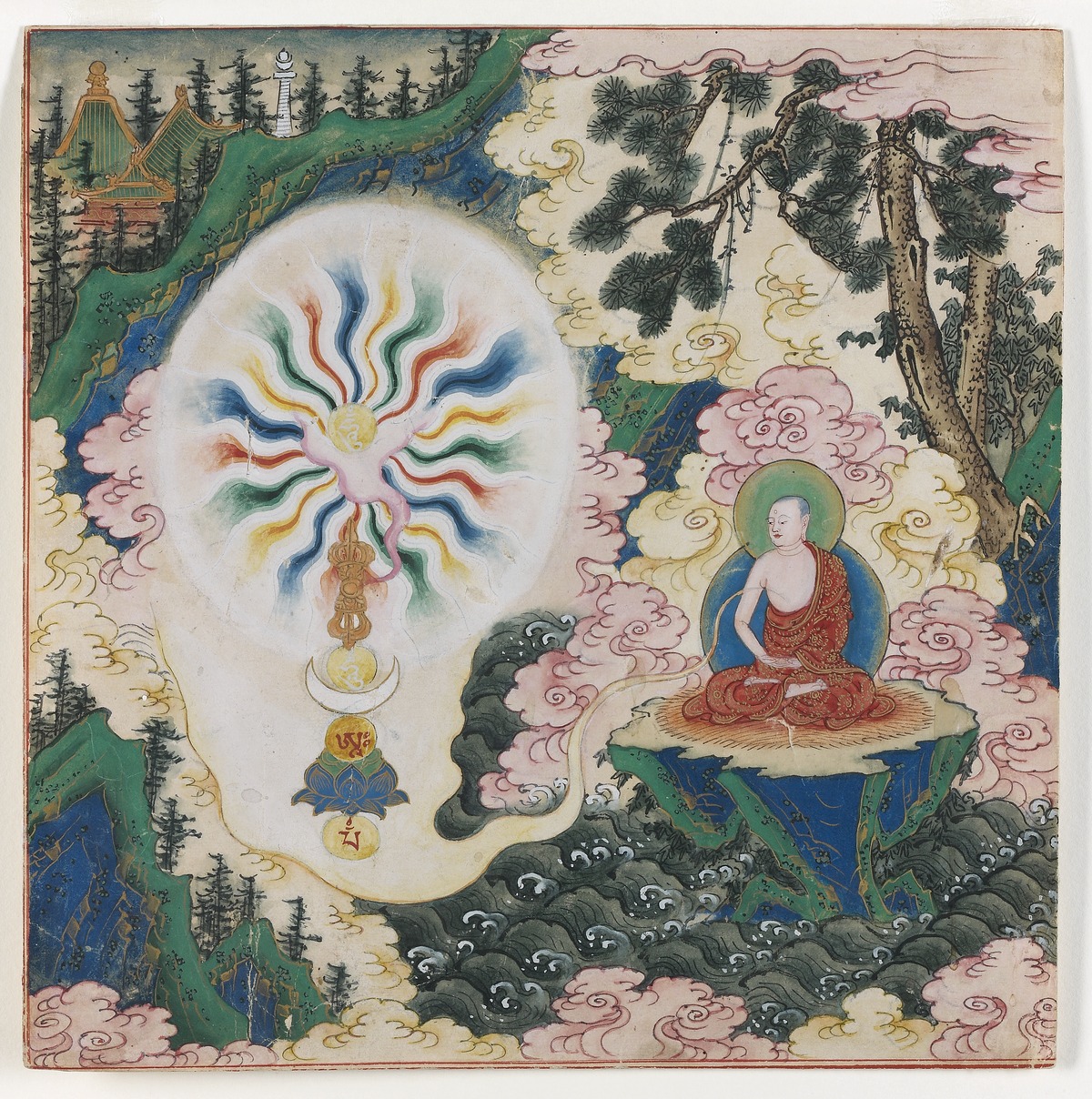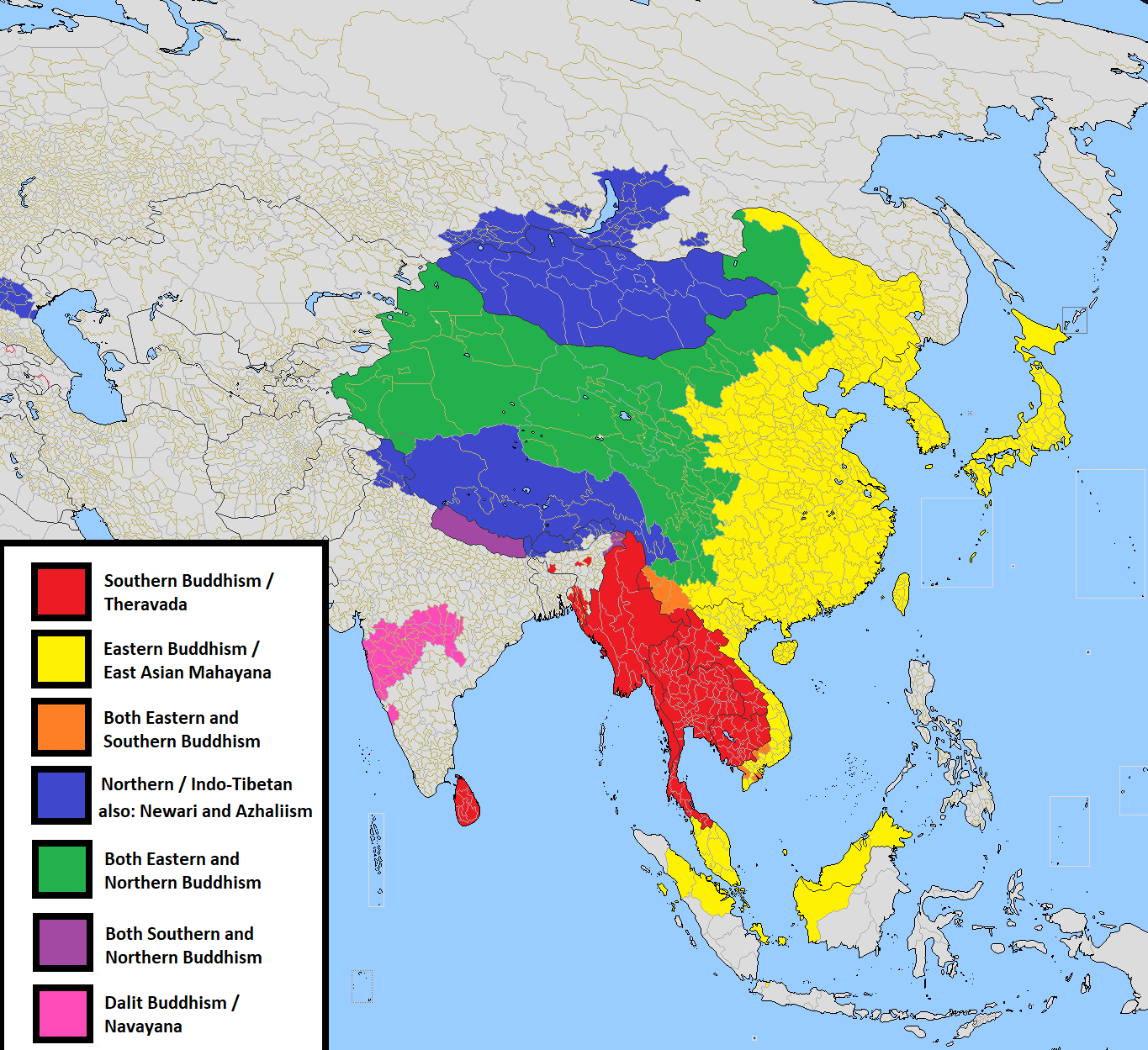|
Buddhist Meditation
Buddhist meditation is the practice of meditation in Buddhism. The closest words for meditation in the classical languages of Buddhism are '' bhāvanā'' ("mental development") and '' jhāna/dhyāna'' (mental training resulting in a calm and luminous mind). Buddhists pursue meditation as part of the path toward liberation from defilements ('' kleshas'') and clinging and craving (''upādāna''), also called awakening, which results in the attainment of Nirvana, and includes a variety of meditation techniques, most notably '' anapanasati'' (mindfulness of breathing). Other techniques include '' asubha bhavana'' ("reflections on repulsiveness");Deleanu, Florin (1992)Mindfulness of Breathing in the Dhyāna Sūtras Transactions of the International Conference of Orientalists in Japan (TICOJ) 37, 42-57. reflection on '' pratityasamutpada'' (dependent origination); ''anussati'' (recollections, including ''anapanasati'') and ''sati'' (mindfulness), culminating in ''dhyana'' (develop ... [...More Info...] [...Related Items...] OR: [Wikipedia] [Google] [Baidu] |
Monkey Gives Honey To Buddha Shakyamuni, India, Bihar, Probably Kurkihar, Pala Dynasty, C
Monkey is a common name that may refer to most mammals of the infraorder Simiiformes, also known as the simians. Traditionally, all animals in the group now known as simians are counted as monkeys except the apes, which constitutes an incomplete Paraphyly, paraphyletic grouping; however, in the broader sense based on cladistics, apes (Hominoidea) are also included, making the terms ''monkeys'' and ''simians'' synonyms in regards to their scope. In 1812, Étienne Geoffroy Saint-Hilaire, Geoffroy grouped the Ape, apes and the Cercopithecidae group of monkeys together and established the name Catarrhini, "Old World monkeys", ("''singes de l'Ancien Monde''" in French language, French). The extant sister of the Catarrhini in the monkey ("singes") group is the Platyrrhini (New World monkeys). Some nine million years before the divergence between the Cercopithecidae and the apes, the Platyrrhini emerged within "monkeys" by migration to South America likely by ocean. Apes are thus de ... [...More Info...] [...Related Items...] OR: [Wikipedia] [Google] [Baidu] |
Brahma-viharas
The ''brahmavihārās'' (sublime attitudes, lit. "abodes of brahma") are a series of four Buddhist virtues and the meditation practices made to cultivate them. They are also known as the four immeasurables (Sanskrit: अप्रमाण, ''apramāṇa'', Pāli: अप्पमञ्ञा, ''appamaññā'') or four infinite minds (Chinese: 四無量心). The ''Brahma-viharas'' are: # loving-kindness or benevolence (maitrī/mettā) # compassion (karuṇā) # empathetic joy (muditā) # equanimity (upekṣā/upekkhā) According to the ''Metta Sutta'', cultivation of the four immeasurables has the power to cause the practitioner to be reborn into a "Brahma realm" (Pāli: ''Brahmaloka''). Etymology and translations * Pāli: ''cattāri brahmavihārā'' * sa, चत्वारो ब्रह्मविहाराः (IAST: ') * , ( Wylie: tshad med bzhi) ''Brahmavihāra'' may be parsed as "Brahma" and "vihāra", which is often rendered into English as "sublime" or "divine ... [...More Info...] [...Related Items...] OR: [Wikipedia] [Google] [Baidu] |
Pali
Pali () is a Middle Indo-Aryan liturgical language native to the Indian subcontinent. It is widely studied because it is the language of the Buddhist ''Pāli Canon'' or ''Tipiṭaka'' as well as the sacred language of ''Theravāda'' Buddhism.Stargardt, Janice. ''Tracing Thoughts Through Things: The Oldest Pali Texts and the Early Buddhist Archaeology of India and Burma.'', Royal Netherlands Academy of Arts and Sciences, 2000, page 25. Early in the language's history, it was written in the Brahmi script. Origin and development Etymology The word 'Pali' is used as a name for the language of the Theravada canon. The word seems to have its origins in commentarial traditions, wherein the (in the sense of the line of original text quoted) was distinguished from the commentary or vernacular translation that followed it in the manuscript. K. R. Norman suggests that its emergence was based on a misunderstanding of the compound , with being interpreted as the name of a particular ... [...More Info...] [...Related Items...] OR: [Wikipedia] [Google] [Baidu] |
Bodhisattva
In Buddhism, a bodhisattva ( ; sa, 𑀩𑁄𑀥𑀺𑀲𑀢𑁆𑀢𑁆𑀯 (Brahmī), translit=bodhisattva, label=Sanskrit) or bodhisatva is a person who is on the path towards bodhi ('awakening') or Buddhahood. In the Early Buddhist schools as well as modern Theravada Buddhism, a bodhisattva (Pali: ''bodhisatta'') refers to someone who has made a resolution to become a Buddha and has also received a confirmation or prediction from a living Buddha that this will be so. In Mahayana Buddhism, a bodhisattva refers to anyone who has generated ''bodhicitta'', a spontaneous wish and compassionate mind to attain Buddhahood for the benefit of all sentient beings. Mahayana bodhisattvas are spiritually heroic persons that work to attain awakening and are driven by a great compassion (''mahakaruṇā''). These beings are exemplified by important spiritual qualities such as the "four divine abodes" (''brahmaviharas'') of loving-kindness ('' metta''), compassion (''karuṇā''), empathet ... [...More Info...] [...Related Items...] OR: [Wikipedia] [Google] [Baidu] |
Buddhahood
In Buddhism, Buddha (; Pali, Sanskrit: 𑀩𑀼𑀤𑁆𑀥, बुद्ध), "awakened one", is a title for those who are awake, and have attained nirvana and Buddhahood through their own efforts and insight, without a teacher to point out the dharma (Sanskrit 𑀥𑀭𑁆𑀫; Pali ''dhamma''; "right way of living"). The title is most commonly used for Gautama Buddha, the founder of Buddhism, who is often simply known as "the Buddha". Buddhahood ( sa, 𑀩𑀼𑀤𑁆𑀥𑀢𑁆𑀯, buddhatva; pi, buddhatta or ; ) is the condition and rank of a buddha "awakened one". This highest spiritual state of being is also termed ''sammā-sambodhi'' (skt. samyaksaṃbodhi 'full complete awakening'). The title is also used for other beings who have achieved ''bodhi'' (awakening) and ''moksha'' (release from craving), such as the other human Buddhas who achieved enlightenment before Gautama, the five celestial Buddhas worshiped primarily in Mahayana, and the bodhisattva named M ... [...More Info...] [...Related Items...] OR: [Wikipedia] [Google] [Baidu] |
Deity Yoga
The fundamental practice of Vajrayana and Tibetan tantra is deity yoga (''devatayoga''), meditation on a chosen deity or "cherished divinity" (Skt. ''Iṣṭa-devatā,'' Tib. ''yidam''), which involves the recitation of mantras, prayers and visualization of the deity, the associated mandala of the deity's Buddha field, along with consorts and attendant Buddhas and bodhisattvas. According to the Tibetan scholar Tsongkhapa, deity yoga is what separates Tantra from Sutra practice. In the Unsurpassed Yoga Tantras, the most widespread tantric form in Indo-Tibetan Buddhism, this method is divided into two stages, the generation stage (''utpatti-krama'') and the completion stage (''nispanna-krama''). In the generation stage, one dissolves one's reality into emptiness and meditates on the deity-mandala, resulting in identification with this divine reality. In the completion stage, the divine image along with the subtle body is applied to the realization of luminous emptiness. The In ... [...More Info...] [...Related Items...] OR: [Wikipedia] [Google] [Baidu] |
Sarvastivada
The ''Sarvāstivāda'' (Sanskrit and Pali: 𑀲𑀩𑁆𑀩𑀢𑁆𑀣𑀺𑀯𑀸𑀤, ) was one of the early Buddhist schools established around the reign of Ashoka (3rd century BCE).Westerhoff, The Golden Age of Indian Buddhist Philosophy in the First Millennium CE, 2018, p. 60. It was particularly known as an Abhidharma tradition, with a unique set of seven Abhidharma works.Westerhoff, 2018, p. 61. The Sarvāstivādins were one of the most influential Buddhist monastic groups, flourishing throughout North India (especially Kashmir) and Central Asia until the 7th century. The orthodox Kashmiri branch of the school composed the large and encyclopedic ''Mahāvibhāṣa'' ''Śāstra'' around the time of the reign of Kanishka (c. 127–150 CE). Because of this, orthodox Sarvāstivādins who upheld the doctrines in the ''Mahāvibhāṣa'' were called ''Vaibhāṣikas.'' According to the Theravādin '' Dipavamsa'', the Sarvastivada emerged from the older Mahīśāsaka school; ... [...More Info...] [...Related Items...] OR: [Wikipedia] [Google] [Baidu] |
Visuddhimagga
The ''Visuddhimagga'' (Pali; English: ''The Path of Purification''), is the 'great treatise' on Buddhist practice and Theravāda Abhidhamma written by Buddhaghosa approximately in the 5th century in Sri Lanka. It is a manual condensing and systematizing the 5th century understanding and interpretation of the Buddhist path as maintained by the elders of the Mahavihara Monastery in Anuradhapura, Sri Lanka. It is considered the most important Theravada text of outside of the Tipitaka canon of scriptures,See, for instance, Kheminda Thera, in Ehara et al. 1995 p. xliii: "The ''Visuddhimagga'' is a household word in all ''Theravāda'' lands. No scholar of Buddhism whether of ''Theravāda'' or of ''Mahāyāna'' is unacquainted with it." and is described as "the hub of a complete and coherent method of exegesis of the Tipitaka." Background Structure The structure of the ''Visuddhimagga'' is based on the ''Ratha-vinita Sutta'' ("Relay Chariots Discourse," MN 24), which describes th ... [...More Info...] [...Related Items...] OR: [Wikipedia] [Google] [Baidu] |
Satipatthana Sutta
The Satipaṭṭhāna Sutta (Majjhima Nikaya 10: ''The Discourse on the Establishing of Mindfulness''), and the subsequently created Mahāsatipaṭṭhāna Sutta (Dīgha Nikāya 22: ''The Great Discourse on the Establishing of Mindfulness''), are two of the most celebrated and widely studied discourses in the Pāli Canon of Theravada Buddhism, acting as the foundation for contemporary ''vipassana'' meditational practice. The Pāli texts of the Satipaṭṭhāna Sutta and the Mahāsatipaṭṭhāna Sutta are largely similar in content; the main difference being a section about the Four Noble Truths (Catu Ariya Sacca) in the Observation of Phenomena (Dhammānupassana), which is greatly expanded in the Mahāsatipaṭṭhāna Sutta. These ''Sutra, sutta''s (discourses) stress the practice of sati (Buddhism), sati (mindfulness) "for the purification of beings, for the overcoming of sorrow and lamentation, for the extinguishing of suffering and grief, for walking on the path of truth, for ... [...More Info...] [...Related Items...] OR: [Wikipedia] [Google] [Baidu] |
Schools Of Buddhism
The schools of Buddhism are the various institutional and doctrinal divisions of Buddhism that have existed from ancient times up to the present. The classification and nature of various doctrinal, philosophical or cultural facets of the schools of Buddhism is vague and has been interpreted in many different ways, often due to the sheer number (perhaps thousands) of different sects, subsects, movements, etc. that have made up or currently make up the whole of Buddhist traditions. The sectarian and conceptual divisions of Buddhist thought are part of the modern framework of Buddhist studies, as well as comparative religion in Asia. From a largely English-language standpoint, and to some extent in most of Western academia, Buddhism is separated into two groups: Theravāda, literally "the Teaching of the Elders" or "the Ancient Teaching," and Mahāyāna, literally the "Great Vehicle." The most common classification among scholars is threefold: Theravāda, Mahāyāna and Vajrayāna. ... [...More Info...] [...Related Items...] OR: [Wikipedia] [Google] [Baidu] |
Abhijñā
Abhijñā ( sa, अभिज्ञा; Pali pronunciation: ''abhiññā''; bo, མངོན་ཤེས ''mngon shes''; ) is a Buddhist term generally translated as "direct knowledge", "higher knowledge"Rhys Davids & Stede (1921-5), pp. 64-65. or "supernormal knowledge." In Buddhism, such special knowledge is obtained through virtuous living and meditation. The attainment of the four jhanas, or meditative absorptions, are considered a prerequisite for their attainment. In terms of specifically enumerated knowledges, these include mundane extra-sensory abilities (such as seeing past lives and various supranormal powers like levitation) as well as the supramundane, meaning the extinction of all mental intoxicants ('' āsava''). Pali literature In Pali literature, ''abhiññā'' refers to both the direct apprehension of ''dhamma'' (translated below as "states" and "qualities") as well as to specialized super-normal capabilities. Direct knowing of ''dhamma'' In SN 45.159, the B ... [...More Info...] [...Related Items...] OR: [Wikipedia] [Google] [Baidu] |




.jpeg/1200px-Gandhara_Buddha_(tnm).jpeg)

.jpg)


